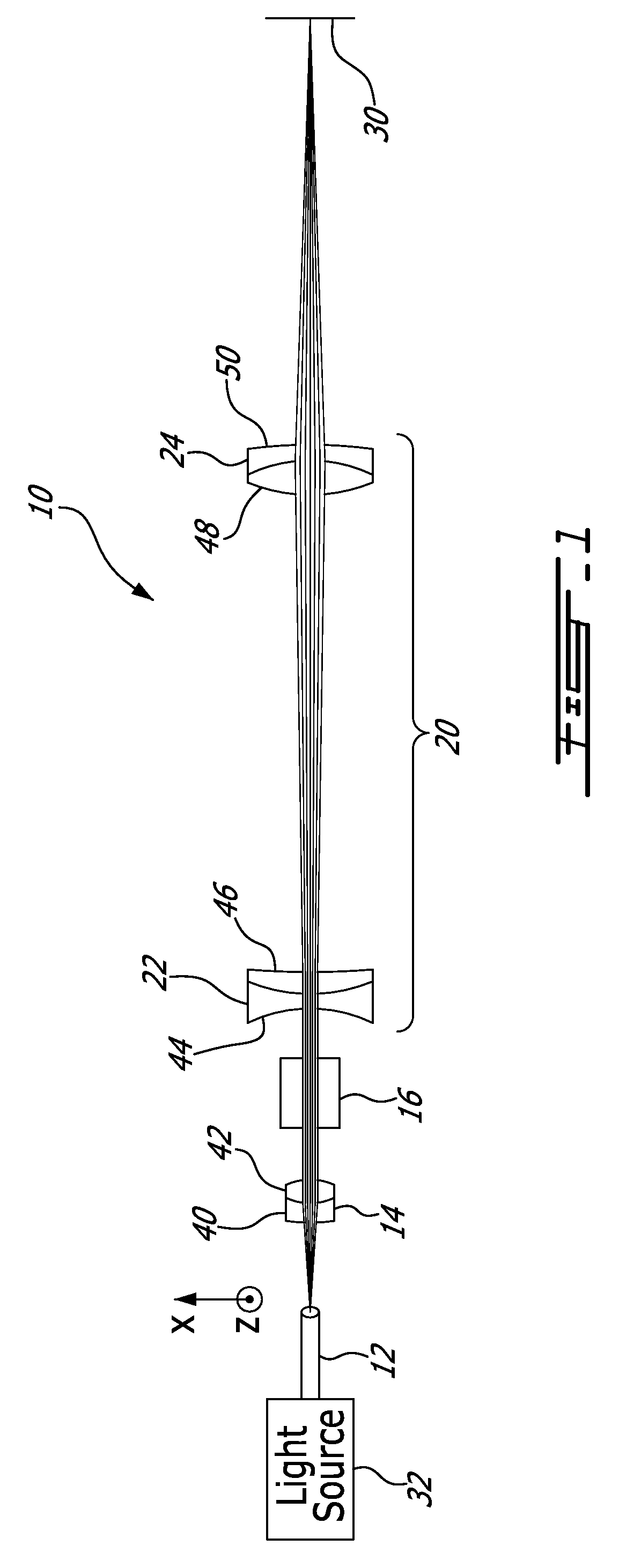Achromatic flat top beam shaping
a flat top beam and achromatic technology, applied in the field of laser beam shaping, can solve the problems of requiring a quite complex optical system, and achieve the effect of reducing deviation from uniformity
- Summary
- Abstract
- Description
- Claims
- Application Information
AI Technical Summary
Benefits of technology
Problems solved by technology
Method used
Image
Examples
example
[0056]A specific example of parameter values that can be used in the optical system10 illustrated in FIG. 1 is now given. In this specific example, the optical system 10 is adjusted to operate with a polychromatic light having wavelength components lying between 405 to 650 nm. This range of wavelengths is typically used in biomedical applications, more specifically in flow cytometry.
[0057]The selected optical fiber 12 is an optical fiber of the model PM-48-25A by Corning™, having a cutoff wavelength of 410 nm.
[0058]The collimation optic 14 is a doublet lens, model # AC050-010-A1 by Thorlabs. The radius of the first, second and third surfaces are respectively 15.42 mm, 4.25 mm and −6.55 mm; the thickness of the first and second lenses are respectively 1.9 mm and 2.5 mm; and the material of the first and second lenses are respectively SF5 glass and BAK4 glass.
[0059]The Powell lens 16 is made by StockerYale and has a first Powell surface, and a second surface that is planar. The conic ...
PUM
 Login to View More
Login to View More Abstract
Description
Claims
Application Information
 Login to View More
Login to View More - R&D
- Intellectual Property
- Life Sciences
- Materials
- Tech Scout
- Unparalleled Data Quality
- Higher Quality Content
- 60% Fewer Hallucinations
Browse by: Latest US Patents, China's latest patents, Technical Efficacy Thesaurus, Application Domain, Technology Topic, Popular Technical Reports.
© 2025 PatSnap. All rights reserved.Legal|Privacy policy|Modern Slavery Act Transparency Statement|Sitemap|About US| Contact US: help@patsnap.com



